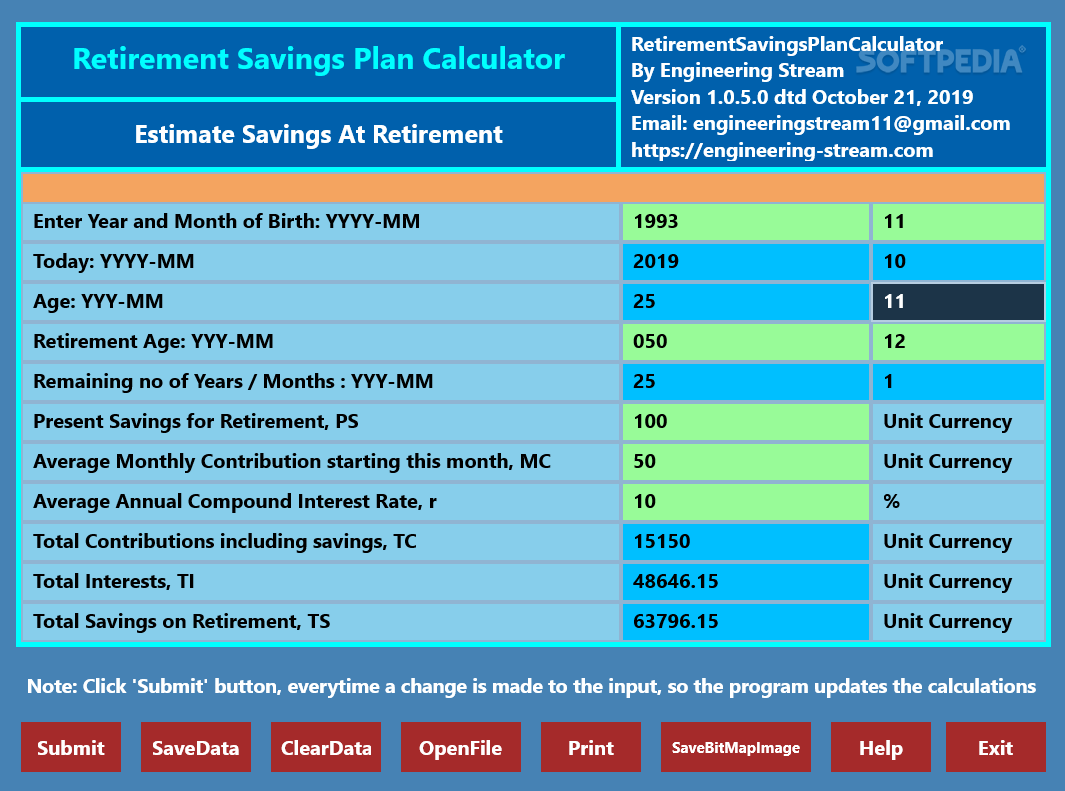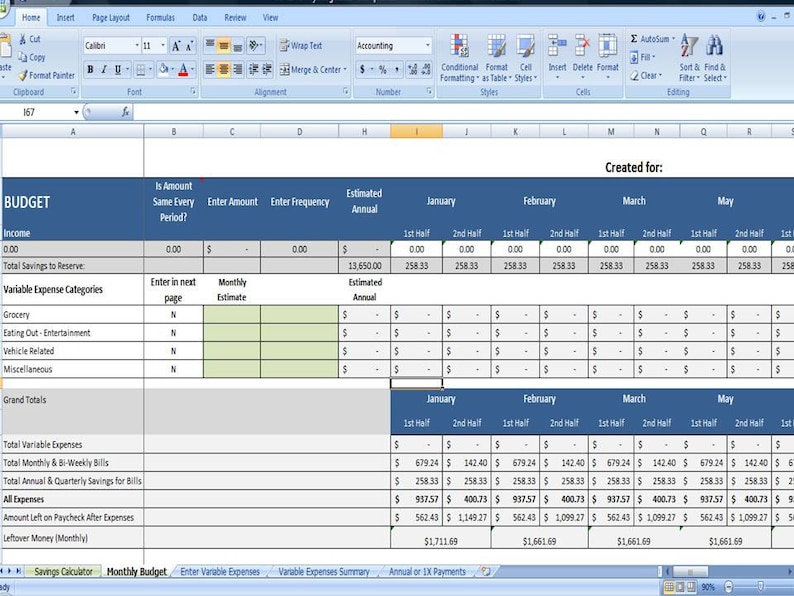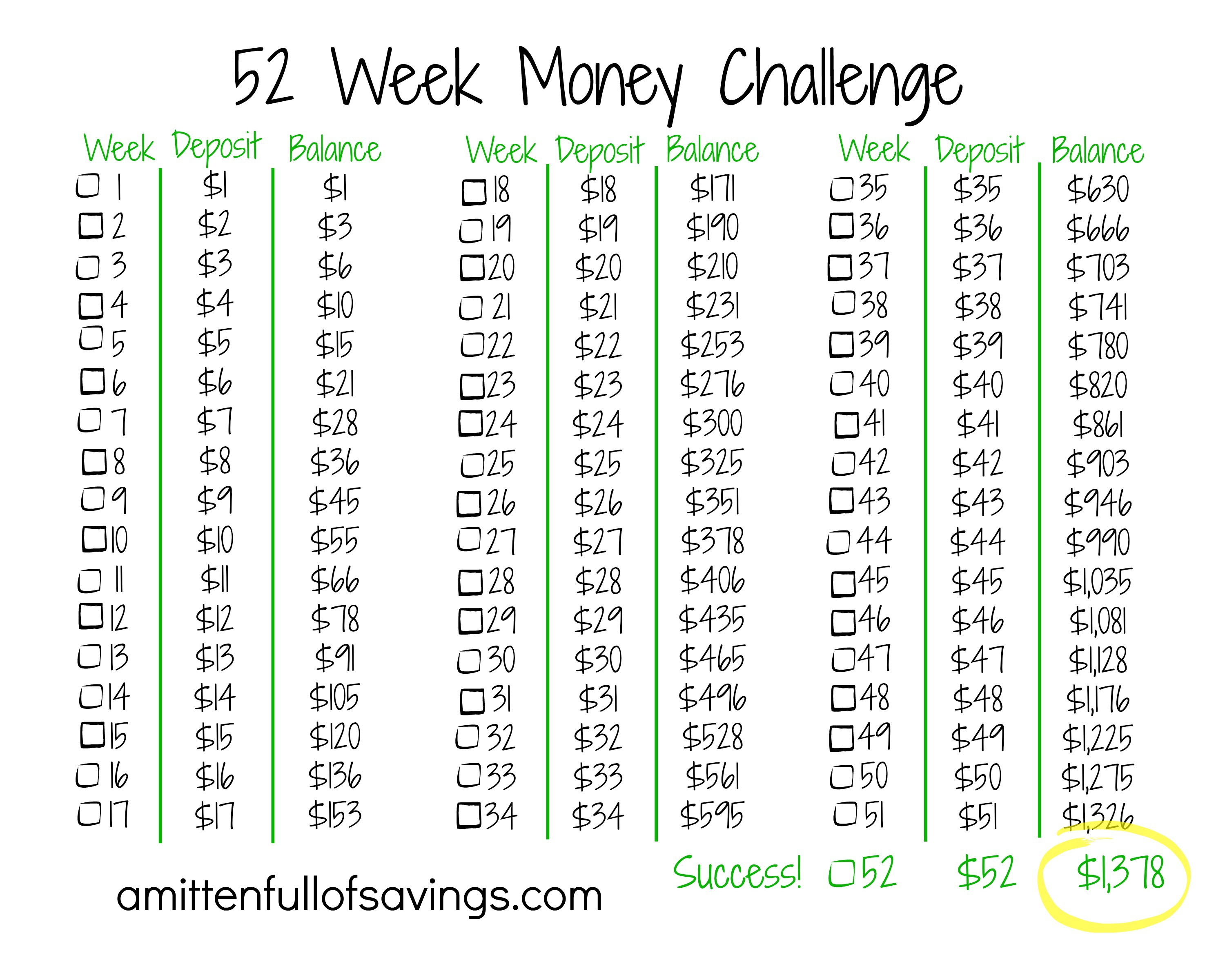

#Savings planner calculator series
A Series of Deposits End of the Monthįor recurring monthly deposits where deposits are made at the end of each month you would use the following calculation.Īll the definitions in this formula are the same as the definitions in the first formula, except PMT is the monthly deposit. To find the interest which was earned from the account all you would need to do is subtract the initial deposit amount from the end result. n = number of times interest is compounded per year.r = annual interest rate, as a decimal rather than percent (also called APR).The above calculator automatically does this for you, but if you wanted to calculate compound interest manually the formula is The hard way would be manually calculating the returns. The easy way to do this is to use the above calculator. How Inflation is Accounted ForĪfter taxes are deducted from interest earnings & final savings are calculated, inflation is accounted for by multiplying the final amount by (100% - inflation rate) years If your account is untaxed then enter zero as the marginal tax rate in the above calculator. Ordinary interest on a regular bank savings account is typically paid for on an annual basis, with banks sending account holders a 1099-INT if they earn above some baseline level of around $10. This approach is how tax payments would work on savings stored inside a tax deferred retirement account.

This calculator estimates taxes based on the rate entered with the tax payment made at the end of the investment period. If you would like to end money at the end of each month then you would subtract the regular contribution amount from the initial savings to calculate interest at the end of the month. In the above calculator when recurring account contributions are made, money is added or subtracted at the beginning of each month, week, or other selected period. If you would like to change the compounding frequency for a one-time deposit then set the "deposit each cycle" variable to $0 and select "transaction frequency" at whatever frequency you wish to compound interest. Most bank savings accounts use a daily average balance to compound interest daily and then add the amount to the account's balance monthly, which is mathematically quite similar to monthly compounding. If the account has a lump-sum initial deposit & does not have any periodic deposit, by default interest is compounded monthly. Our calculator compounds interest each time money is added. Calculation Mechanics How Interest is Compounded If you would like to print out a schedule of your savings growth over time, please click on the "Create Growth Table" button to generate a printable schedule of your payment history, accumulated interest & balance. If you have a particular savings goal you want to reach by a specific date then please use our savings goal calculators.
#Savings planner calculator update
Once you have entered this information the calculator will inform you of how much money you will have saved up before income taxes, how much income tax you'll owe & what the remaining amount of money is worth in real terms after accounting for inflation.Ĭalculations update automatically when any input is changed. If this calculation is for a lump sum deposit with no recurring transactions enter "Never" in the "add money" drop down. Next enter how much money you intend to deposit or withdrawal periodically. First, enter your initial amount you have set aside, then enter the interest rate along with how long you tend to invest for. Use this calculator to quickly figure out how much money you will have saved up during a set investment period. Using the interest income to fund higher education may allow you to be exempted from the Federal income tax on the interest. The interest income is not taxable at the State & local level, though is taxable at the Federal level. The rate of interest is adjusted twice per year based on the CPI-U. Interest is paid semi-annually & any I bonds bought through October 2022 I bonds pay an APR of 9.62% for the first 6 months.

Each person which onws I bonds is required to have a TreasuryDirect account.

Parents who have purchased the limit can also create minor-linked accounts to purchase bonds for young children, or purchase bonds for adult children. Each EIN can purchase up to $10,000 per year. citizens & green card holders can invest in up to $10,000 worth of I bonds per year on TreasuryDirect. While the Federal Reserve has lifted interest rates aggressively in 2022 most commercial banks have been slow to follow suit, with many of them parking their depositor's money at the Fed as excessive reserves & earning the interest you could have earned directly.


 0 kommentar(er)
0 kommentar(er)
